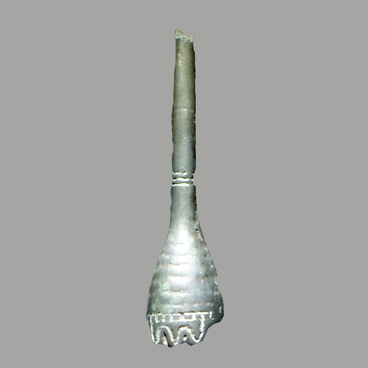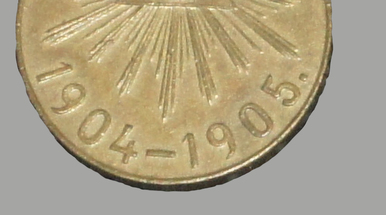Shors are Turkic-speaking people living in the south-eastern part of Western Siberia, mainly in the south of the Kemerovo region (in Tashtagol, Novokuznetsk, Mezhdurechensk, Myski, Osinniki districts and others), as well as in some snowy areas of the Republic of Khakassia and the Republic of Altai, Krasnoyarsk and Altai Krais. The total number of the people amounts to 14 thousand. There are two ethnographic groups of Shors: Southern, or mountain and taiga (at the beginning of the 20th century, the area inhabited by the southern Shors was called Mountain Shoria), and northern or forest and steppe (the so-called Aba Shors). The Altaian and the Khakass are the closest to the Shors in terms of the language, while the Altaian and the Chulyms are the closest to them in terms of culture.
Blacksmithing and iron ore mining and smelting have been of great importance for the northern Shors (hence, the name ‘Blacksmithing Tatars’). The reconstruction of the Kuznetsk Tatar’s iron-melting furnace was done by Kuznetsk ethnographer, artist and model maker K. А. Yevreinov according to the description of such a furnace given in the diary of I.G. Gmelin, a traveling scientist who visited the area of modern Mountain Shoria in 1734 and saw the furnace and the iron melting process personally.
Here is the description: “The furnace is located where the fireplace for cooking is usually located, and the ground is slightly dug under the furnace. The pit, which is to be found in all Tatar yurts at the site of the fireplace, is part of the melting furnace. A clay structure the bottom of which has the same cross-section as the pit dug in the ground, about half a foot, is narrowed upwards, and the top cross-section at a distance of a foot from the floor does not exceed one and a half inches; it all makes up, along with the pit, a melting furnace. There is a hole in the front part of it, which is closed during the melting process, and another one on the side, in which two bellows are inserted. All work is done by two Tatars; one of them brings coal and ore by turns, and he took no more than the amount of ore that fits on the tip of a knife, the ore was used in a finely ground form. So he filled up the furnace, and the other guy was blowing using the two bellows. As soon as the coal sinks, a new portion of ore and coal is brought in, and the whole procedure is repeated until about three pounds of ore are poured into the furnace - the amount that the furnace can hold at a time. After the last portion of ore has been poured in, the furnace operator, after blowing up a little bit with bellows, takes out the stone bricked up in there with forceps. The melt is in the pit; it”s removed from under the charcoal and cleaned of stuck charcoal by hitting it with a billet. Of the three pounds of ore, about two pounds of iron are produced, which, while looking foul enough, is in fact good. We”ve been watching all this for an hour and a half.”
Blacksmithing and iron ore mining and smelting have been of great importance for the northern Shors (hence, the name ‘Blacksmithing Tatars’). The reconstruction of the Kuznetsk Tatar’s iron-melting furnace was done by Kuznetsk ethnographer, artist and model maker K. А. Yevreinov according to the description of such a furnace given in the diary of I.G. Gmelin, a traveling scientist who visited the area of modern Mountain Shoria in 1734 and saw the furnace and the iron melting process personally.
Here is the description: “The furnace is located where the fireplace for cooking is usually located, and the ground is slightly dug under the furnace. The pit, which is to be found in all Tatar yurts at the site of the fireplace, is part of the melting furnace. A clay structure the bottom of which has the same cross-section as the pit dug in the ground, about half a foot, is narrowed upwards, and the top cross-section at a distance of a foot from the floor does not exceed one and a half inches; it all makes up, along with the pit, a melting furnace. There is a hole in the front part of it, which is closed during the melting process, and another one on the side, in which two bellows are inserted. All work is done by two Tatars; one of them brings coal and ore by turns, and he took no more than the amount of ore that fits on the tip of a knife, the ore was used in a finely ground form. So he filled up the furnace, and the other guy was blowing using the two bellows. As soon as the coal sinks, a new portion of ore and coal is brought in, and the whole procedure is repeated until about three pounds of ore are poured into the furnace - the amount that the furnace can hold at a time. After the last portion of ore has been poured in, the furnace operator, after blowing up a little bit with bellows, takes out the stone bricked up in there with forceps. The melt is in the pit; it”s removed from under the charcoal and cleaned of stuck charcoal by hitting it with a billet. Of the three pounds of ore, about two pounds of iron are produced, which, while looking foul enough, is in fact good. We”ve been watching all this for an hour and a half.”


